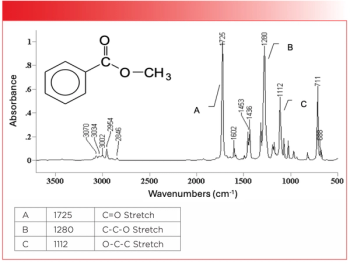Article Highlights
- A recent study introduces novel SERS device enhancing vibrational modes through active flexible Au nanogaps.
- Previous static SERS structures were hindered by the narrowness and lack of tunability in the gap plasmon resonance.
- The new device presented in the study achieves tunability up to ∼1200 cm–1, enabling selective amplification of Raman spectral regions.
- The researchers demonstrated the device's potential for real-time chemical analysis and diagnostics in biomedical sensing.
A novel surface-enhanced Raman spectroscopy (SERS) device can enhance and modulate various vibrational modes through active flexible Au nanogaps, according to a study published in Nano Letters (1).
SERS devices are very often used in the biomedical industry. By harnessing localized electromagnetic field enhancement, typically achieved through the interaction between noble metal nanostructures and incident light, SERS platforms can amplify Raman signals by several orders of magnitude, enabling the detection of even single molecules (2). These devices find applications across diverse fields, including bioanalysis and nanomaterial science, can provide molecular fingerprinting with high sensitivity (2). Moreover, ongoing advancements in nanofabrication techniques and material engineering continue to refine the performance and versatility of SERS devices, promising further breakthroughs in analytical capabilities and real-world applications (2,3).
In this recent study, researchers from Ulsan National Institute of Science and Technology (UNIST) and Pohang University of Science and Technology (POSTECH) introduced an innovative adaptive gap-tunable SERS device designed to improve the selective enhancement and modulation of various vibrational modes through active flexible Au nanogaps, all with adaptive optical control.
Previous research has shown that the gap plasmon (GP) resonance in static SERS structures has been hindered by its narrowness and lack of tunability (1). However, the researchers demonstrated that this newly developed device overcomes these limitations by enabling a tunability of GP resonance, reaching up to ∼1200 cm–1 (1). This achievement is made possible through the engineering of gap width, facilitated by mechanical bending of a polyethylene terephthalate substrate.
The team's experiments confirmed that the tuned GP resonance selectively amplifies different Raman spectral regions of the molecules under observation (1). The researchers almost demonstrated that by conducting wavefront shaping of excitation beams, they can control the SERS intensity (1).
Read More: SERS-Based System Used to Detect Synthetic Antioxidants
Besides experimental validations, the researchers presented simulation results showcasing the mechanical and optical properties of a one-dimensional (1D) flexible nanogap (1). The researchers showed in their findings that their newly created SERS device is applicable to biomedical sensing because of its ability to conduct real-time chemical analysis and diagnostics (1).
This approach can help observe and control the enhanced chemical responses with dynamic tunability. This new development of this SERS device not only expands the horizons of SERS applications, but it improves dynamic tunability in chemical sensing and analysis. With its potential implications ranging from fundamental research to practical biomedical applications, the adaptive gap-tunable SERS device could offer a better alternative for biomedical imaging.
References
(1) Moon, T.; Joo, H.; Das, B.; et al. Adaptive Gap-Tunable Surface-Enhanced Raman Spectroscopy. Nano Lett. 2024, 24 (12), 3777–3784. DOI: 10.1021/acs.nanolett.4c00289
(2) Oliveira, M. J.; Dalot, A.; Fortunato, E.; et al. Microfluidic SERS Devices: Brightening the Future of Bioanalysis. Discov. Mater. 2022, 2 (1), 12. DOI: 10.1007/s43939-022-00033-3
(3) Liang, X.; Li, N.; Zhang, R.; et al. Carbon-based SERS Biosensor: From Substrate Design to Sensing and Bioapplication. NPG Asia Mater. 2021, 13, 8. https://doi.org/10.1038/s41427-020-00278-5





